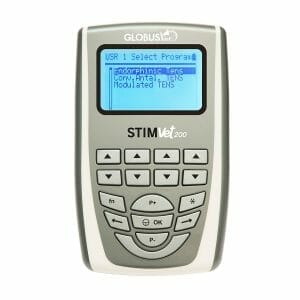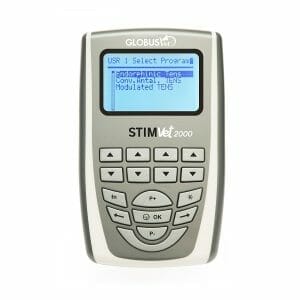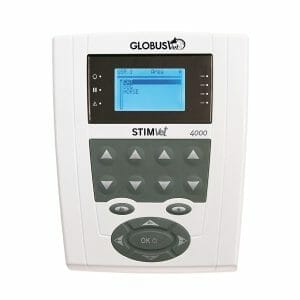Veterinary electrotherapy
In Veterinary Electrotherapy, the electric current is used for two fundamental purposes: the reduction of pain perception and the stimulation of excitable tissues (muscles).
Antalgic electrotherapy
TENS stands for Transcutaneous Electrical Nerve Stimulation. This technique, born in the late 70s, represented a significant qualitative leap in the field of analgesic therapy. Antalgic currents are indicated in the symptomatic treatment of peripheral pain.
They are particularly effective in managing the pain that accompanies most inflammatory processes and in osteoarthritis.
Neuromuscular electrostimulation
The electric current is able to promote muscle contraction both by acting on the motor neuron and on the muscle itself. The interaction between electrical stimuli and biological tissues is a very complex phenomenon and in some cases the choice of a stimulation signal is an important therapeutic action that must be formulated according to the functional conditions of the muscle (innervated muscle, denervated or partially denervated muscle ) and the objective to be pursued. Stimulation electrotherapy is aimed at both normal innervated and denervated muscles. Neuromuscular stimulation can be used for stimulating purposes in various situations, pathological and non-pathological. While not replacing physical exercise in neuromuscular reactivation, electrotherapy is a useful complement. In some pathological situations, such as for example peripheral paralysis, electrotherapy is one of the few aids that allows you to interact with muscle tissue in a different way from passive exercise.
TENS: Tendinitis, Tenosynovitis, Osteoarthritis, Back pain, Muscle pain, Post surgical pain
ELECTROSTIMULATION: Amyotrophy, Muscle strengthening, More joint stability, Less muscle contracture
Benefits
- Quick pain relief
- Facilitated functional recovery
- Stimulation of denervated muscles
- Prolonged analgesic effect




